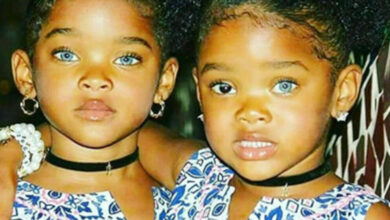2-Year-Old Nevada Boy Dies from Brain-Eating Amoeba: ‘He Fought 7 Days’
While extremely rare, Naegleria fowleri — or brain-eating amoeba — can cause an almost always fatal infection, according to the CDC
:max_bytes(150000):strip_icc():focal(882x34:884x36):format(webp)/woodrow-bundy-072023-110db9414dcd444c8f2444b05cef2383.jpg)
A 2-year-old boy has died one week after battling Naegleria fowleri, or brain-eating amoeba. The toddler contracted the rare virus while swimming in Ash Springs, Nevada.
“Woodrow Turner Bundy returned victoriously to our father in heaven at 2:56 am. He fought 7 days,” his mother, Briana Bundy, wrote in an emotional Facebook post. “I knew I had the strongest son in the world. He is my hero and I will forever be grateful to God for giving me the goodest baby boy on earth, and I am grateful to know I will have that boy in heaven someday ”
According to friends of the family, Woodrow started experiencing “flu-like symptoms” last week when his parents decided to take him to the hospital. Doctors initially assumed it was meningitis and began treatments. However, it was later determined that the toddler’s symptoms were a result of brain eating amoeba.
Woodrow died Wednesday morning from the infection.
“I am so proud of the spirit Woodrow is,” Briana wrote. “He lived life so aggressively. He never wasted a moment. He found joy in all things. He found beauty and adventure and love in all of God’s creations. His excitement for life was unmatched. I’ve never seen the joy and aggression to show love the way he expressed it.”
“Although I am gutted, I know that is just the selfishness of me as his mommy. He left his mark,” she added. “I will see my boy soon enough and it will be even more sweet and tearful as it was letting him progress to eternity ”
Friends of the Bundy family have since created a GoFundMe account in order to help cover medical and funeral costs.
:max_bytes(150000):strip_icc():focal(882x34:884x36):format(webp)/woodrow-bundy-072023-110db9414dcd444c8f2444b05cef2383.jpg)
TODD ENGEL/GOFUNDME
Naegleria fowleri, commonly referred to as brain-eating amoeba, is a single-celled living organism that can cause a rare and almost always fatal infection of the brain called primary amebic meningoencephalitis (PAM). According to a CDC report, only four people in the U.S. out of 151 from 1962 until 2020 have survived the infection.
Brain-eating amoeba is most commonly found in warm fresh waters such as lakes, rivers and hot springs. It can also survive in poorly maintained or minimally chlorinated swimming pools, where it feeds on bacteria.
Symptoms of brain-eating amoeba generally start one to nine days after nasal exposure and many people die within 18 days of showing symptoms, according to the CDC. These include severe headaches, fever, nausea and vomiting in the first stage and stiff neck, seizures, altered mental status, hallucinations and a coma in the second stage. PAM, the infection caused from the amoeba, is ultimately hard to detect though, because of the rapid progression of the disease. Diagnosis is typically made postmortem.
Although infection is rare (there are less than 8 infections per year), there is currently no way to reduce the number of amoebas in water. On its website, the CDC says it is “unclear how a standard might be set to protect human health and how public health officials would measure and enforce such a standard.”
The only guaranteed way to avoid brain-eating amoeba infections is to refrain from participating in water-related activities in warm freshwater. “Anyone that enjoys time in a body of water should cover their nose before they go in or use nose clips,” Mirna Chamorro, Florida Department of Health in Orange County spokeswoman, previously told PEOPLE. “As long as they don’t put their head under water, they are okay.”




